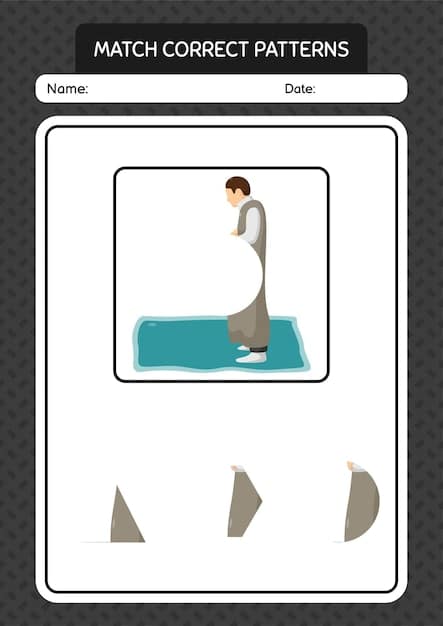Breathwork Meditation: Breathing Techniques for Calm & Anxiety Relief

Breathwork meditation involves various breathing techniques that can effectively calm your nervous system and reduce anxiety by regulating physiological responses and promoting mental clarity.
Discover how breathwork meditation can be a powerful tool to calm your nervous system and ease anxiety. By exploring different breathing techniques, you can unlock a path to greater well-being and peace of mind.
What is Breathwork Meditation?
Breathwork meditation is a practice that involves consciously altering your breathing patterns to influence your mental, emotional, and physical state. It’s a simple yet profound way to tap into your body’s natural relaxation response.
Different techniques focus on various aspects of breathing, such as the rate, depth, and rhythm, each designed to produce specific effects on the body and mind.

The Science Behind Breathwork
Breathwork’s effectiveness stems from its direct impact on the autonomic nervous system, which controls involuntary functions like heart rate, digestion, and breathing. Here’s how it works:
- Vagus Nerve Stimulation: Deep, slow breathing stimulates the vagus nerve, the primary component of the parasympathetic nervous system, promoting relaxation and reducing stress.
- Heart Rate Variability (HRV): Breathwork increases HRV, an indicator of the body’s ability to adapt to stress, improving overall resilience and well-being.
- Reduced Cortisol Levels: Controlled breathing helps lower cortisol, the stress hormone, counteracting the effects of chronic stress and anxiety.
- Increased Oxygenation: Certain techniques enhance oxygen intake, nourishing cells, boosting energy levels, and promoting mental clarity.
By understanding these physiological mechanisms, one can appreciate the potential of breathwork as a self-regulation and wellness tool.
In conclusion, breathwork meditation is an accessible pathway to self-regulation, calming the nervous system and cultivating relaxation for overall well-being.
Benefits of Breathwork for Anxiety Relief
Breathwork offers a range of benefits that make it a powerful tool for managing and relieving anxiety. It addresses both the physical and psychological symptoms of anxiety, leading to a more balanced and calm state.
From immediate stress reduction to long-term emotional regulation, breathwork can be tailored to meet individual needs and preferences.
Immediate Stress Reduction
Breathwork techniques are highly effective in providing immediate relief from moments of acute stress or anxiety. Here’s how:
- Activating the Relaxation Response: Specific breathing exercises trigger the body’s relaxation response, counteracting the fight-or-flight response associated with anxiety.
- Interrupting Anxiety Cycles: By focusing on your breath, you can break the cycle of anxious thoughts and physical tension, creating space for calm and clarity.
- Lowering Heart Rate and Blood Pressure: Controlled breathing lowers heart rate and blood pressure, alleviating physical symptoms like rapid heartbeat and shortness of breath.
Long-Term Emotional Regulation
Regular practice of breathwork can lead to enhanced emotional resilience and regulation over time, by:
- Improving Mindfulness and Awareness: Consistent breathwork cultivates present moment awareness, helping you recognize and manage anxiety triggers more effectively.
- Building Emotional Resilience: By learning to self-regulate through breathing, you develop the ability to cope with stressors in a healthier way, reducing the impact of anxiety.
- Promoting Emotional Balance: Breathwork can help release pent-up emotions and foster a sense of emotional balance, reducing the intensity and frequency of anxiety symptoms.
Ultimately, the benefits of breathwork for anxiety relief are multifaceted, offering both immediate and long-term support for those seeking to improve their mental and emotional well-being.
Diaphragmatic Breathing: Releasing Tension
Diaphragmatic breathing, also known as belly breathing, is a foundational technique in breathwork that focuses on engaging the diaphragm, a large muscle at the base of the lungs. This technique is particularly effective for reducing stress and promoting relaxation.
By practicing diaphragmatic breathing, you can improve oxygen intake, lower heart rate, and alleviate tension throughout your body.
How to Practice Diaphragmatic Breathing
Follow these steps to properly execute diaphragmatic breathing:
- Find a Comfortable Position: Lie on your back with your knees bent or sit in a comfortable chair with your feet flat on the ground.
- Place Your Hands: Put one hand on your chest and the other on your belly, just below your rib cage.
- Inhale Slowly: Breathe in slowly through your nose, allowing your belly to rise while keeping your chest relatively still.
- Exhale Gently: Breathe out slowly through your mouth, tightening your abdominal muscles and letting your belly fall.
- Repeat: Continue this process for 5-10 minutes, focusing on the movement of your belly and maintaining a slow, steady pace.
Regular practice of diaphragmatic breathing can significantly reduce tension and promote a sense of calm and well-being. This technique is particularly helpful for managing stress-related symptoms and enhancing overall relaxation.
In summary, diaphragmatic breathing is a fundamental technique for stress reduction, promoting relaxation and enhancing mental clarity through focused engagement of the diaphragm and steady breathing patterns.
Box Breathing: Regulating the Nervous System
Box breathing, also known as square breathing, is a simple yet effective technique used to regulate the nervous system and promote calmness. It involves equal intervals of inhalation, breath retention, exhalation, and another retention.
This balanced approach can help reduce anxiety, improve focus, and enhance overall mental clarity.

Step-by-Step Guide to Box Breathing
Here’s how to practice box breathing:
- Find a Comfortable Position: Sit or lie down in a relaxed posture. Close your eyes can enhance focus.
- Inhale: Slowly inhale through your nose for a count of four, filling your lungs completely.
- Hold: Hold your breath for a count of four, maintaining a sense of calm and control.
- Exhale: Slowly exhale through your mouth for a count of four, releasing all the air from your lungs.
- Hold: Hold your breath again for a count of four before starting the next cycle.
- Repeat: Continue this pattern for 5-10 minutes, focusing on the rhythm and maintaining equal intervals for each step.
Box breathing is a versatile tool that can be used anytime, anywhere to quickly calm the mind and body. It is particularly useful for managing acute anxiety and enhancing overall mental clarity.
Alternate Nostril Breathing: Balancing Energy
Alternate nostril breathing, known as Nadi Shodhana Pranayama in yoga, is a powerful technique for balancing the energy channels in the body and calming the mind. This practice involves breathing through one nostril while holding the other nostril closed, and then alternating between nostrils.
It can help reduce stress, improve focus, and promote a sense of overall well-being.
- Improved Respiratory Function: Enhances lung capacity and efficiency, promoting better oxygenation.
- Reduced Anxiety and Stress: Balances the nervous system and lowers cortisol levels, leading to a sense of calm.
- Enhanced Mental Clarity: Sharpens focus and concentration, improving cognitive performance.
- Balanced Energy: Harmonizes the energy channels in the body, promoting a sense of overall well-being.
Regular practice of alternate nostril breathing can lead to a more balanced and harmonious state of mind and body. This technique is particularly beneficial for those seeking to reduce stress and improve their overall well-being.
How to Practice Alternate Nostril Breathing
Follow these steps to properly execute alternate nostril breathing:
- Find a Comfortable Position: Sit in a cross-legged position or in a chair with your spine straight.
- Hand Position: Use your right hand to close off your nostrils. Rest your left hand on your lap.
- Close Right Nostril: Gently close your right nostril with your thumb and inhale deeply through your left nostril.
- Close Left Nostril: At the peak of your inhalation, close your left nostril with your ring finger and release your thumb from the right nostril.
- Exhale Right Nostril: Exhale slowly and completely through your right nostril.
- Inhale Right Nostril: Inhale deeply through your right nostril.
- Close Right Nostril Again: Close your right nostril with your thumb and release your ring finger from the left nostril.
- Exhale Left Nostril: Exhale slowly and completely through your left nostril.
- Repeat: Continue alternating between nostrils for 5-10 minutes, maintaining a smooth and rhythmic flow.
By alternating between nostrils, you can stimulate and balance the energy channels, promoting a sense of overall well-being.
4-7-8 Breathing: Falling Asleep Faster
The 4-7-8 breathing technique is a simple yet powerful method developed by Dr. Andrew Weil to promote relaxation and facilitate sleep. It involves a specific pattern of inhalation, breath retention, and exhalation designed to calm the nervous system.
This technique can help reduce anxiety, lower heart rate, and prepare the body for restful sleep.
Here are some advantages of the 4-7-8 breathing technique:
- Promotes Relaxation: Calms the nervous system and reduces stress, promoting a sense of peace and tranquility.
- Facilitates Sleep: Helps lower heart rate and prepare the body for restful sleep.
- Reduces Anxiety: Interrupts anxiety cycles and promotes mental clarity.
- Simple and Convenient: Can be practiced anytime, anywhere without any special equipment or preparation.
The 4-7-8 breathing technique is a valuable tool for anyone seeking to improve their sleep quality and reduce anxiety. Its simplicity and effectiveness make it a practical addition to any wellness routine.
How to Practice 4-7-8 Breathing
Follow these steps to properly execute 4-7-8 breathing:
- Find a Comfortable Position: Lie down in bed or sit in a relaxed posture.
- Place the Tip of Your Tongue: Place the tip of your tongue against the ridge of tissue just behind your upper front teeth, and keep it there throughout the exercise.
- Exhale Completely: Exhale completely through your mouth, making a whooshing sound.
- Close Your Mouth and Inhale: Close your mouth and inhale quietly through your nose for a count of four.
- Hold Your Breath: Hold your breath for a count of seven.
- Exhale Completely: Exhale completely through your mouth, making a whooshing sound, for a count of eight.
- Repeat: Repeat this cycle at least four times.
Integrating Breathwork into Your Daily Routine
Integrating breathwork into your daily routine can significantly enhance your overall well-being. Consistent practice can lead to reduced stress, improved focus, and enhanced emotional resilience.
By incorporating breathwork techniques into various aspects of your day, you can reap the benefits more consistently and effectively.
Here are some strategies for incorporating breathwork into your daily routine:
- Morning Practice: Start your day with 5-10 minutes of breathwork. Techniques like diaphragmatic breathing or alternate nostril breathing can set a calm and focused tone for the day.
- During Breaks: Use short breathwork exercises during work or study breaks. Box breathing can quickly reduce stress and improve concentration.
- Before Bed: Practice 4-7-8 breathing to relax your mind and prepare your body for sleep. This can help reduce insomnia and improve sleep quality.
- During Stressful Situations: Utilize breathwork as a tool to manage stress in real-time. Deep breathing can help calm your nervous system and prevent escalation of anxiety.
By integrating breathwork into your daily life, you can develop a consistent practice that supports your overall well-being and helps you manage stress more effectively.
| Key Point | Brief Description |
|---|---|
| 🧘 Diaphragmatic Breathing | Engages the diaphragm to enhance relaxation and reduce stress. |
| 🫁 Box Breathing | Regulates the nervous system with equal intervals for calm and focus. |
| 👃 Alternate Nostril Breathing | Balances energy channels and calms the mind. |
| 😴 4-7-8 Breathing | Facilitates sleep and reduces anxiety through a specific pattern. |
FAQ
▼
The primary purpose is to calm the nervous system, reduce stress, and promote mental and physical well-being through conscious regulation of breathing patterns.
▼
You are doing it correctly if your belly rises when you inhale and falls when you exhale, while your chest remains relatively still.
▼
Regular practice can reduce anxiety, improve focus, enhance mental clarity, and promote a sense of overall calmness and balance in the nervous system.
▼
It helps by harmonizing the left and right hemispheres of the brain, promoting emotional balance, reducing stress, and enhancing overall well-being.
▼
Yes, this technique promotes relaxation, reduces anxiety, and lowers heart rate, which prepares your body for sleep and helps you fall asleep more quickly.
Conclusion
Breathwork meditation offers a versatile and accessible approach to managing stress and improving overall well-being. By exploring different breathing techniques and integrating them into your daily routine, you can unlock a path to greater calm, focus, and emotional resilience.





